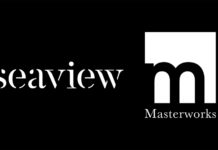Nearly 9 out of 10 Americans think high schools should teach a required course in financial literacy, according to a recent survey by the credit bureau Equifax.
Yet, just 17 states require high schools to teach basic financial skills, according to a 2018 study by the Council for Economic Education. In the past two years, the number of states requiring financial literacy courses in high school has not changed.
I’ve been out of high school for 15 years and I still wish I had learned more about how to safely handle my finances before I started living on my own. A little more money smarts could have potentially saved me a ton of money.
The public high school I attended in Mission, Texas, didn’t require a course in financial literacy (I’m not even sure it offered one). As a result, I left high school with just a dim understanding of how to manage my own finances.
My financial illiteracy cost me: Last year, I tried tallying some of my biggest financial mistakes I remember making in my early to mid-20s and estimated that I lost more than $5,000 to preventable mistakes.
I routinely overdrafted my bank account, carried a balance on high-interest store cards I could have paid off, forfeited opportunities to use less costly financial products and all-but-ignored my financial and credit health.
If I had a little more financial know-how back then, I might have been savvier with my choices and saved myself a lot of grief. If I could travel back in time and design a financial course for my 17-year-old self, here are four lessons I would be sure to include:
1. How to budget
I’ve always been a bit of an overspender, but when I was in my late teens and early 20s, I really had a budgeting problem.
For example, the summer after I graduated from high school, I took a job as a junior bookseller at a big-box bookstore and squandered an embarrassing amount of my paycheck, which was supposed to go toward savings.
After I went off to college, I also repeatedly overdrafted my bank account and struggled to stretch my work-study earnings and allowance.
I wish I had learned then how to set an itemized budget and use coupons, promotions and other tools to make the dollars I earned go further.
A better understanding of how to budget would have helped me later, when I started interning in pricey urban centers and had trouble coming up with money to pay for expensive public transportation, networking lunches and happy hours and other food costs.
2. What to look for before opening a financial product
I also wish I had learned more about what to look for when comparing financial products and what questions I should ask when applying for a credit card, checking account or other financial product.
It didn’t occur to me, for example, to compare APRs on a credit card or to look for hidden fees on a checking account.
I also didn’t know that the checks I kept receiving from my credit card company would have cost me more if I had used them, nor did I know how much extra I’d have to spend if I used my card overseas. (To avoid these fees abroad, CreditCards.com has a list of no foreign transaction fee credit cards.)
Rather than compare checking accounts and credit cards, I just stuck with the same Bank of America account I opened after turning 18 and accepted a credit card from the same bank.
If I were to teach a financial literacy class now, I would make sure teenagers know how to make sense of a credit card’s Schumer Box and what to look for when reading a product’s terms.
I would also point out the most important charges, rewards and other factors that differentiate financial products, such as balance transfer fees on a credit card, deposit requirements on a free checking account and various rules covering rewards cards.
3. How much it really costs to carry debt
Another lesson I wish someone had instilled in me: How much you really pay when you’re charged interest.
If I had a better sense of how much it costs to carry a balance or take on a big loan, I might not have had such a laissez-faire attitude toward debt.
For years, I carried balances on my credit cards without ever taking the time to add up all my interest payments. Indeed, CreditCards.com’s latest poll shows half of Americans who carry credit card balances also don’t know their card APRs.
A stronger appreciation for the long-term costs of carrying a balance probably would have prevented me from revolving a balance on my high-interest store card and may have even prompted me to search for a low interest card.
If I were to teach a course today, I’d also talk about how much it will cost you if you pay only the minimum amount due and how even a 1 or 2 percent difference in rates can add up quickly.
4. How to protect your consumer rights
When I read financial literacy materials, I see a lot of information about budgeting, compound interest and taxes, but I don’t see much about consumer rights, such as the right to obtain a free credit report or the right to dispute billing errors on a credit card statement.
That’s a mistake. Americans have a lot of ways to protect themselves, thanks to the Fair Credit Reporting Act, the Fair Credit Billing Act, the Credit CARD Act of 2009 and other consumer protection laws.
Most consumer protection laws require you to be proactive. For example, credit bureaus don’t just send you your free credit reports. You have to log on to annualcreditreport.com to request your free credit reports. You also can get a free copy of your TransUnion credit report from CreditCards.com.
Too many Americans aren’t taking the proactive action of checking their credit reports. While the Equifax survey found that 29 percent had checked their credit reports in the last month, a 2018 CreditCards.com study found that half of U.S. adults haven’t checked their credit reports in the past year.
If I were to design a financial literacy course for high schoolers, I’d make sure that they not only know what their rights are under various consumer protection laws, I’d also teach students how to use those laws to their advantage.
Bottom line: Personal finance isn’t nearly as complicated as some people make it out to be, but there’s a lot of information out there that consumers need to know in order to make intelligent decisions.
High school is a great time to start instilling some of those lessons so that kids don’t make a bunch of unforced errors their first time out of the gate.
See related: Why schools should teach financial literacy, Financial literacy online resources for parents and children
Source : Creditcards














